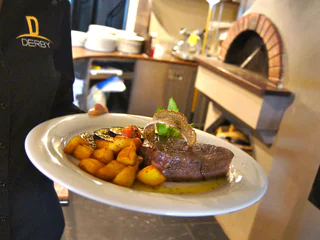
1/5
Derby Restaurant Pizzeria Club
Vipiteno/Sterzing, Sterzing/Vipiteno, Sterzing/Vipiteno and environs
Objevte jedinečný charakter jihotyrolského údolí Wipptal s malebným Sterzingem/Vipitenem, nejsevernějším městem Jižního Tyrolska. Boční údolí Alp nabízejí impozantní horské vrcholy a vášnivou sportovní kulturu. Cestou poznávejte a setkávejte se s krásnými hrady.

1/5
Vipiteno/Sterzing, Sterzing/Vipiteno, Sterzing/Vipiteno and environs

1/3
Fleres/Pflersch, Brenner/Brennero, Sterzing/Vipiteno and environs

Racines di Dentro/Innerratschings, Ratschings/Racines, Sterzing/Vipiteno and environs

Casateia/Gasteig, Ratschings/Racines, Sterzing/Vipiteno and environs

Mazzes/Matzes, Sterzing/Vipiteno, Sterzing/Vipiteno and environs

1/4
Vipiteno/Sterzing, Sterzing/Vipiteno, Sterzing/Vipiteno and environs

1/7
Sasso/Stein, Pfitsch/Val di Vizze, Sterzing/Vipiteno and environs

Valgiovo/Jaufental, Ratschings/Racines, Sterzing/Vipiteno and environs

1/2
Stanghe/Stange, Ratschings/Racines, Sterzing/Vipiteno and environs

Ridanna/Ridnaun, Ratschings/Racines, Sterzing/Vipiteno and environs

Flanes/Flans, Freienfeld/Campo di Trens, Sterzing/Vipiteno and environs

1/6
Stanghe/Stange, Ratschings/Racines, Sterzing/Vipiteno and environs

Ridanna/Ridnaun, Ratschings/Racines, Sterzing/Vipiteno and environs

Sasso/Stein, Pfitsch/Val di Vizze, Sterzing/Vipiteno and environs

Valles/Vals, Mühlbach/Rio di Pusteria, Sterzing/Vipiteno and environs

1/2
Brennero/Brenner, Brenner/Brennero, Sterzing/Vipiteno and environs

Casateia/Gasteig, Ratschings/Racines, Sterzing/Vipiteno and environs

1/5
Sasso/Stein, Pfitsch/Val di Vizze, Sterzing/Vipiteno and environs

Fleres/Pflersch, Brenner/Brennero, Sterzing/Vipiteno and environs

Fleres/Pflersch, Brenner/Brennero, Sterzing/Vipiteno and environs

1/3
Vipiteno/Sterzing, Sterzing/Vipiteno, Sterzing/Vipiteno and environs

1/5
Jaufental/Valgiovo, Ratschings/Racines, Sterzing/Vipiteno and environs

Pennes di Fuori/Ausserpens, Sarntal/Sarentino, Sterzing/Vipiteno and environs

Vipiteno/Sterzing, Sterzing/Vipiteno, Sterzing/Vipiteno and environs

Gossensaß/Colle Isarco, Brenner/Brennero, Sterzing/Vipiteno and environs

Jaufental/Valgiovo, Ratschings/Racines, Sterzing/Vipiteno and environs

Valgiovo/Jaufental, Ratschings/Racines, Sterzing/Vipiteno and environs

Valgiovo/Jaufental, Ratschings/Racines, Sterzing/Vipiteno and environs

1/5
Vipiteno/Sterzing, Sterzing/Vipiteno, Sterzing/Vipiteno and environs

Ridanna/Ridnaun, Ratschings/Racines, Sterzing/Vipiteno and environs